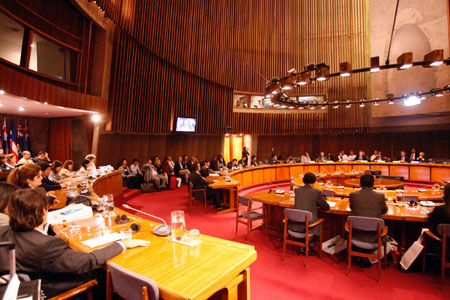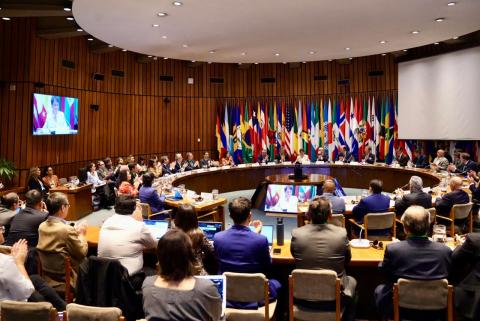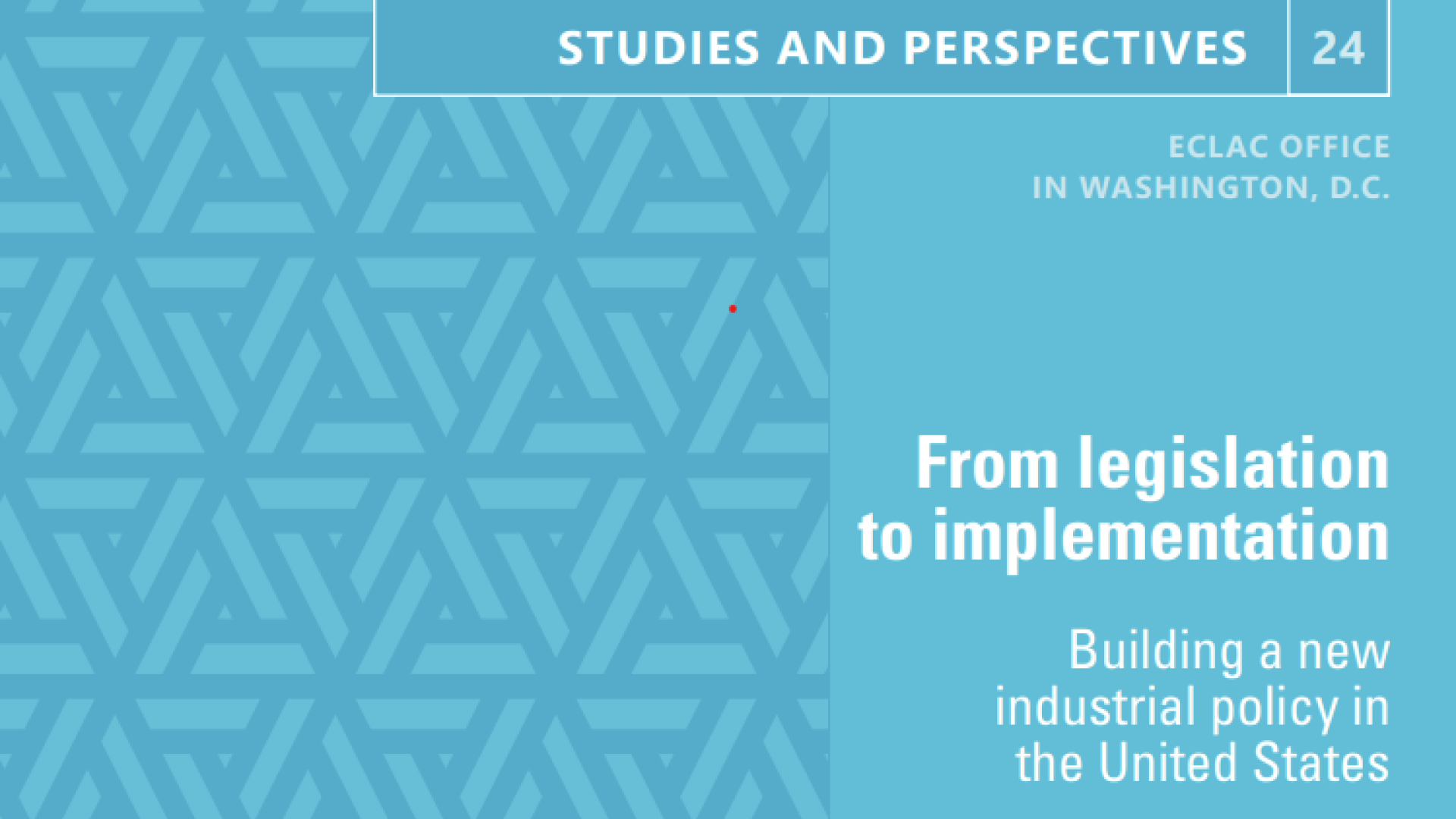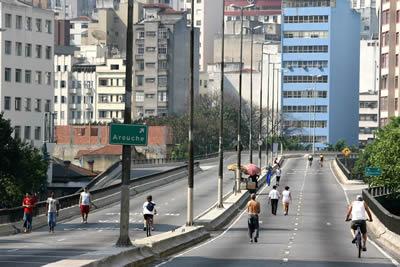News
(26 October 2011) According to a report released by ECLAC, South American ports require significant investments to improve their infrastructure, enabling them to receive large vessels which are currently navigating the main shipping routes in the world.
The study was presented during the opening session of the Annual Conference of the International Association of Maritime Economists IAME 2011 Latin America, which is taking place between 25 and 28 October at the Economic Commission for Latin America and the Caribbean (ECLAC) headquarters in Santiago, Chile.
The report, which will be available on the ECLAC website soon, estimates that between 2016 and 2019 vessels of on average 13,000 TEU (unit for measuring containers) will arrive at the east and west coasts of South America. At present, the largest vessels which reach the ports of the region are no bigger than 8,000 TEU and substantial investments will be needed to increase the capacity of shipping terminals, particularly their depth. This will in turn affect port competitiveness and logistic networks in the region.
The increase in the size of vessels is due to the growing external demand and the global trend of international trade in search of economies of scale and economic density.
At the opening of the IAME 2011 Latin America meeting, the Deputy Executive Secretary of ECLAC, Antonio Prado, stated that the maritime industry, ports and logistic services play an increasingly important role as facilitators of development and international insertion of Latin America.
He warned that the total infrastructure gap (the distance between the infrastructural requirements and the effective supply of infrastructure to transport, energy and telecommunications sectors, and water and sanitation services) in Latin America amounts to almost US$ 170 billion per year until 2020, which represents just over 5% of regional GDP.
"At the same time, this is a great opportunity and a challenge to take a qualitative technological leap forward incorporating the principles of sustainability to the four main aspects: social, economic, environmental and institutional. We need to recreate public policies to achieve better planning and implementation of projects," said Mr. Prado.
The Under Secretary of Transport of Chile, Gloria Hutt, acknowledged that there are significant gaps in port infrastructure and their associated logistic chains. She said that it is extremely important to improve efficiency and international competitiveness of terminals, and organize operations to make better use of inner spaces.
"The challenge is for our ports to grow. We are still maturing and we must seek models to achieve full development by 2018, which is our goal," she stated.
A number of participants took part in the opening session of IAME 2011 Latin America, including Hugo Altomonte, Director of the ECLAC Division for Natural Resources and Infrastructure; Gordon Wilmsmeier of the Infrastructure Services Unit of ECLAC and Chair of the conference; Kevin Cullinane, Director of the Scientific Committee of the Transport Research Institute (TRI) at Edinburgh Napier University, Scotland, United Kingdom; Theo E. Notteboom of the Institute of Transport and Maritime Management Antwerp (ITMMA) at the University of Antwerp, Belgium, and President of IAME; and Ricardo J. Sánchez, Chief of the Infrastructure Services Unit of the ECLAC Division for Natural Resources and Infrastructure, who presented the study.
At the meeting, which is being held in South America for the first time, participants from 40 countries will analyse the maritime and port sectors in Latin America and the rest of the world and its key role as facilitator of development. To do so, they will meet in more than 30 sessions and round table discussions to talk about more than 100 papers presented at the conference.
For the first time in the history of IAME, an Ibero-American session was held on Tuesday 25 October, organized thanks to the support of the Spanish Agency for International Development Cooperation (AECID) and Ports of the State of Spain. At the meeting, researchers from various Latin American countries and Spain analysed the challenges which Latin America must deal with for sustainable development of their port infrastructure and maritime transport services.
See also:
- Words by Antonio Prado, ECLAC Deputy Executive Secretary (in Spanish)
- Presentation by Ricardo J. Sánchez, Chief of ECLAC Infrastructure Services Unit
The study on the maximum size of vessels will be available on the ECLAC website soon.
Any queries should be addressed to the ECLAC Public Information and Web Services Section. E-mail: dpisantiago@cepal.org; Telephone: (56 2) 210 2040.
Follow us on: Twitter, Facebook, Flickr and YouTube.



